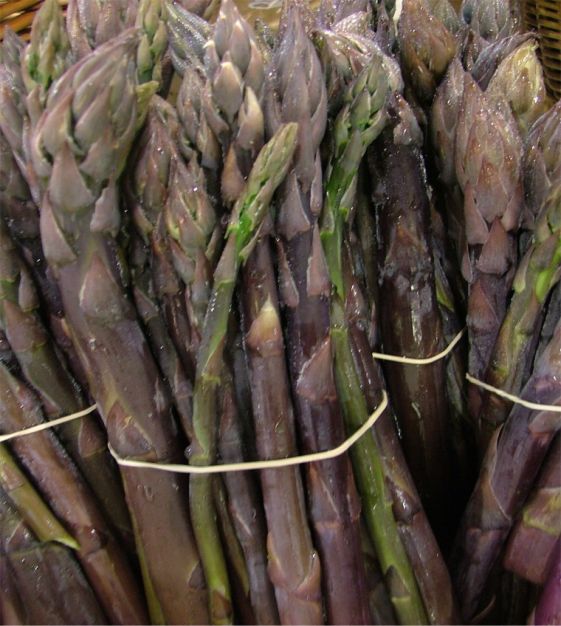Back to Top
Purple Passion Asparagus
Without question, Purple Passion Asparagus is a connoisseur's delight. Its tender spears are beautiful, deep burgundy with a creamy green interior, tight buds and a rounded tip. More tender, mild and sweet than standard varieties, Purple Passion is very vigorous and productive and will yield spears ready for harvest a year earlier than most varieties.Tender Purple Passion is best appreciated raw in salads or steamed with just a bit of butter and lemon (and chopped, hard boiled eggs-the Dutch way). When cooked, it develops a rich yet mild nutty flavor and a paler purple color. For a special treat, lightly toast a slice of French bread or garlic bread. Butter it and place steamed Asparagus on top of the warm toast raft. Pour equal parts fresh lemon juice and melted butter over the Asparagus. It is simple, and simply delicious. Asparagus ambrosia! (OP.)
One packet of about 100 seeds
One packet of about 100 seeds
- Buy 10 for $6.80 each and save 10%
- Buy 50 for $5.65 each and save 25%
- Information
- Gardening Tips
Asparagus initially takes a bit of work and patience, but it's well worth it. One of nature's perfect foods, Asparagus could be the foodie icon of spring. Just wait until you've tasted your own freshly harvested spears: unadulterated Asparagus ambrosia, whether you prefer them thin and snapped, or thick and shaved with a vegetable peeler; and raw, steamed, sautéed, roasted or grilled. No other spear will ever come close: once cut, they start to lose their innate sweet succulence. Fresh Asparagus is a guilty pleasure plain, anointed with Hollandaise Sauce, topped with butter and chopped medium-boiled eggs, or incorporated into novel pasta dishes, stir-fries and soups. Fresh Asparagus deserves your finest table setting. It's a celebration of the garden's rebirth.
Seed should be sown in a temporary nursery bed, then transplanted to a permanent patch after one season. Once in its permanent spot, it's easy to grow in horticultural zones 4 to 8. It can take up to 4 years to produce spears for harvest without damaging the rootstock for future crops, but you can sneak a few spears for special dinners after 3 years. How could you resist? Deer-resistant.
Average seed life: 3 years.
Average seed life: 3 years.
Asparagus initially takes a bit of work and patience, but it's well worth it. One of nature's perfect foods, Asparagus could be the foodie icon of spring. Just wait until you've tasted your own freshly harvested spears: unadulterated Asparagus ambrosia, whether you prefer them thin and snapped, or thick and shaved with a vegetable peeler; and raw, steamed, sautéed, roasted or grilled. No other spear will ever come close: once cut, they start to lose their innate sweet succulence. Fresh Asparagus is a guilty pleasure plain, anointed with Hollandaise Sauce, topped with butter and chopped medium-boiled eggs, or incorporated into novel pasta dishes, stir-fries and soups. Fresh Asparagus deserves your finest table setting. It's a celebration of the garden's rebirth.
Seed should be sown in a temporary nursery bed, then transplanted to a permanent patch after one season. Once in its permanent spot, it's easy to grow in horticultural zones 4 to 8. It can take up to 4 years to produce spears for harvest without damaging the rootstock for future crops, but you can sneak a few spears for special dinners after 3 years. How could you resist? Deer-resistant.
Average seed life: 3 years.
Average seed life: 3 years.




